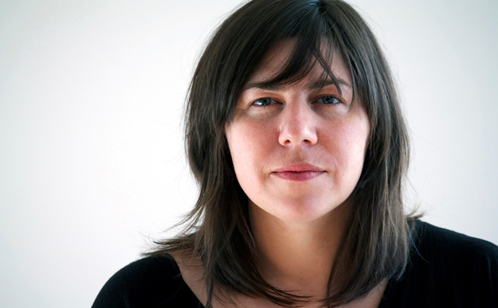
Nadia Myre is a contemporary visual artist from Quebec and an Algonquin member of the Kitigan Zibi Anishinaabeg First Nation, who lives and works in Montreal. Myre's work weaves together complex histories of Aboriginal identity, nationhood, memory and handicraft. Myre received her MFA from Concordia University in 2002. After officially becoming a member of the Kitigan Zibi Anishinabeg in 1997, Myre embarked on a work that honoured her mother's struggles in obtaining their status. The immensely successful resulting piece, Indian Act (2000-03), presented the 56 pages of the annotated Indian Act, which Myre and more than 200 collaborators beaded over in red and white.
Since then, Myre's works have been presented nationally and internationally at institutions such as the National Gallery of Canada, the National Museum of the American Indian, the 2012 Sydney Biennale, the Museum of Contemporary Native Arts and the Musée national des beaux-arts du Québec, and 2014 Shanghia Biennale.. Her work is collected by many major institutions in Canada and worldwide. Myre was awarded the Pratt & Whitney Canada's Les Elles de l'art for the Conseil des arts de Montréal (2011), Quebec Arts Council's Prix à la création artistique pour la region des Laurentides (2009) and an Eiteljorg Museum Fellowship (2003). In 2014, she won the Sobey Art Award, for which she was also longlisted in 2011, 2012 and 2013.
Nadia Myre, Respite # 1 (For the Immortals), beaded work, 2016
Continuing her beaded series Mediations on Black (2012) and Mediations on Red (2013), Myre's new work Respite (for the Immortals) for Idiorrhythmic project in Suzhou is a series of circular beaded works in black punctuated throughout with various colour tones. While Meditations on Black references pools of water and our internal physicality, and Meditations on Red addresses ideas surrounding blood quantum and identity politics, the photographic series in Respite is inspired by imagery from our solar system and evokes a sublime vision of the cosmos.
These beaded works make reference to the mystery of the universe and the infinite nature of the galaxies and star systems that dwarf us. We may choose to gaze upon the heavenly bodies to guide us in moments of darkness and light: loss and celebration, transformation and stability, chaos and peace. This series explores the question of afterlife - where does the soul go when it departs from the living? What do we believe constitutes the "heavens" and the cosmos?

The works in Respite were created in the manual and slow process of a fibre practice (each beaded piece is hand-sewn with small glass beads), then digitized and enlarged to create high resolution photographs. In Respite, the aesthetic dimension of the beadwork centres on the small colourful deviations within a persistent black uniformity of space, creating a sense of contained vibration within a circular framework.
Respite (for the Immortals) draw us into a subtle yet enveloping feeling, one that informs us of our deepest fears and desires. These works incite a willingness to observe and contemplate the cosmos as we discern our own positionality and radical interconnectedness. When we look outward to the infinite space of the cosmos, we are doing so from a small inner space. The Eight Immortals in Chinese Taoism resonate with ideas of transmutation, prosperity and longevity. The earth is young, but the universe is old. The deep nothingness of space exists externally of ourselves, and if we value it as being worthy of reflection, then it could provide respite for the immortal aspects of living within and between all our relations. (Text by Nadia Myre, which is slightly edited.)